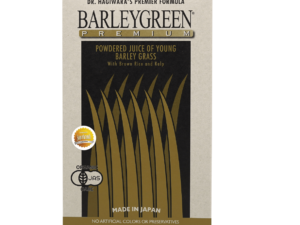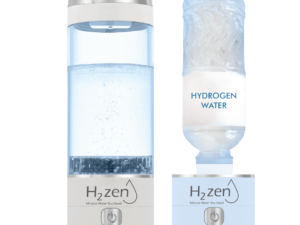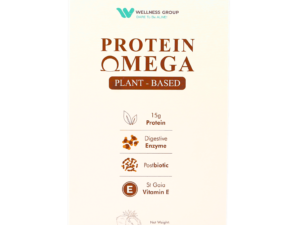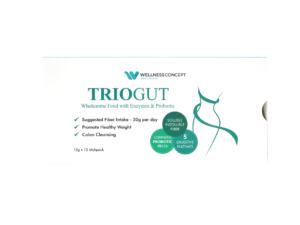What if the key to unlocking better health lies in microscopic allies that have partnered with humans for millennia? The World Health Organization defines probiotics as “live microorganisms” that provide health benefits when consumed properly. These tiny powerhouses have been part of human diets since ancient civilizations first fermented dairy products over 5,000 years ago.
Modern science now confirms what early cultures instinctively understood. The global probiotics market surged to $58.2 billion in 2021, reflecting growing recognition of their role in wellness strategies. But this raises crucial questions about product quality and effectiveness that every consumer should consider.
Viability remains the cornerstone of probiotic benefits. Manufacturers use advanced techniques to protect these delicate microorganisms during production and storage. Proper handling ensures they survive manufacturing processes and reach the digestive system ready to work.
Wellness Group experts (+60123822655) emphasize that understanding viability factors helps users choose products delivering genuine results. Their team offers personalized guidance Monday-Friday (9:30am-6:30pm) and Saturday (10am-5pm) to navigate Malaysia’s diverse probiotic market.
Key Takeaways
- Probiotics require live microorganisms to provide health benefits as defined by the WHO
- Humans have used microbial-rich foods for over 10,000 years
- The global market reached $58.2 billion in 2021 with 7.5% annual growth
- Viability depends on advanced production methods and proper storage
- Expert guidance ensures optimal product selection for individual needs
- Quality probiotics support digestive wellness and overall health
The Science Behind Probiotic Viability
Ever wonder what makes certain probiotics effective while others fall short? The answer lies in a delicate balance of biological ingenuity and precise environmental control. These living allies deploy sophisticated strategies to remain functional from factory to gut.

Overview of Probiotic Mechanisms
Probiotics work like microscopic gardeners in our digestive system. Specific strains produce compounds that nourish beneficial microbes while crowding out harmful ones. For example, Lactobacillus species create lactic acid that makes the gut environment hostile to pathogens.
Research confirms these microorganisms can temporarily modify gut conditions without permanent colonization. Their metabolic activities trigger immune responses and strengthen intestinal barriers, explaining why quality products deliver tangible health benefits.
Factors Influencing Bacterial Survival
Three key elements determine probiotic success:
- Production precision: Freeze-drying techniques protect cultures during manufacturing
- Storage smarts: Temperature-controlled packaging maintains stability
- Delivery design: Acid-resistant capsules ensure safe stomach passage
Even robust strains like Bifidobacterium need proper handling. Exposure to heat or humidity can deactivate them before consumption. Smart consumers look for products with viability guarantees and expiration date tracking.
How Do Bacteria Stay Alive in Probiotics?
Imagine microscopic warriors equipped with biochemical shields navigating hostile environments. The survival of beneficial microbes depends on their biological armor and precise manufacturing protocols. Advanced science meets ancient microbial wisdom to keep these allies battle-ready until they reach their destination.
Role of Lactic Acid Bacteria and Metabolic Activity
Certain microbial champions naturally excel at self-preservation. Lactobacillus and Bifidobacterium strains generate protective substances during their metabolic processes. Their lactic acid production creates an acidic shield, fending off competitors while stabilizing their cellular structures.
Manufacturing stages test these organisms’ resilience. Fermentation boosts populations, while concentration and freeze-drying remove moisture without destroying cells. Only strains maintaining metabolic activity during dehydration can later reactivate in the gut. This vitality determines their ability to produce enzymes and combat pathogens post-consumption.
Environmental Conditions and Processing Techniques
Temperature control proves vital for most cultures. Refrigeration preserves delicate strains, while hardy endospore-formers survive shelf storage. Modern encapsulation methods create acid-resistant shields, allowing safe passage through stomach acids.
Quality-focused producers monitor:
- Moisture levels during lyophilization
- Oxygen exposure in packaging
- pH balance during fermentation
Third-party testing verifies colony counts and functional capacity. Consumers should check for CFU guarantees and expiration dates to ensure maximum potency. Proper storage after purchase completes the survival chain from lab to lifestyle.
Enhancing Probiotic Benefits with Expert Guidance

Navigating the world of probiotic supplements requires more than just reading labels. With over 20 strains showing distinct health benefits in clinical studies, personalized advice becomes essential. Research reveals these microorganisms can support everything from immune function to mood regulation when matched correctly to individual needs.
Wellness Group's Commitment to Quality and Service
Their team analyzes three key factors for optimal results: gut microbiome composition, lifestyle habits, and specific wellness goals. Clients receive tailored recommendations for probiotic strains proven effective against digestive discomfort, seasonal challenges, or metabolic concerns.
Key service features include:
- Evidence-based strain selection for targeted outcomes
- Storage optimization techniques to maintain potency
- Dietary pairing strategies enhancing bacterial survival
Integrating Probiotic Science into Daily Health Routines
Effective use extends beyond pill consumption. Wellness Group educates clients on timing intake with meals, combining probiotic products with prebiotic foods, and monitoring gut responses. Their experts stay updated on emerging research linking specific strains to mental clarity, skin health, and metabolic support.
Contact them via WhatsApp at +60123822655 (Monday-Friday 9:30am-6:30pm, Saturday 10am-5pm) for customized plans. Proper guidance transforms generic supplements into precision tools for sustained health benefits, ensuring users maximize their investment in gut wellness.
Conclusion
Behind every effective probiotic lies a story of survival and science. These microbial allies navigate manufacturing processes, storage challenges, and digestive acids before reaching their intestinal destination. Their success depends on advanced production methods that preserve cellular vitality through freeze-drying and protective encapsulation.
Scientific insights reveal how specific strains withstand environmental stressors. Research confirms that consistent daily use of quality probiotics supports digestive wellness and immune responses. Modern studies increasingly connect these microorganisms to broader health benefits, from mood regulation to metabolic support.
Choosing potent supplements requires understanding viability markers like CFU counts and expiration dates. Third-party tested products with guaranteed stability deliver the most reliable beneficial effects. As microbiome science evolves, selecting strains backed by clinical evidence becomes crucial for achieving targeted wellness outcomes.
Partnering with knowledgeable professionals helps consumers navigate Malaysia’s diverse probiotic market effectively. This approach ensures selections align with individual health goals while maximizing the transformative potential of these living supplements.
FAQ
What makes lactic acid bacteria survive in fermented foods?
Lactic acid bacteria thrive in fermented foods due to their ability to metabolize sugars into lactic acid. This process creates an acidic environment that inhibits harmful microbes while supporting their own growth. Packaging and storage methods, like refrigeration, further preserve their viability.
Why are live microorganisms important in probiotic products?
Live microorganisms in probiotic products, such as Lactobacillus or Bifidobacterium, actively interact with the gut microbiome. Their metabolic activity produces compounds like short-chain fatty acids, which support digestive health, immune function, and nutrient absorption.
How do temperature and storage affect probiotic shelf life?
Many probiotic strains are sensitive to heat and moisture. Refrigeration slows their metabolic activity, extending shelf life. Products like Yakult or Activia use specialized packaging to protect live cultures from oxygen and light, ensuring potency until consumption.
Can probiotic supplements survive stomach acid?
Certain strains, like Bacillus coagulans, form protective spores that resist stomach acid. Others rely on delayed-release capsules or microencapsulation techniques to safely reach the intestines, where they colonize and confer health benefits.
What role do prebiotics play in supporting probiotic bacteria?
Prebiotics, such as inulin or fructooligosaccharides, act as food for beneficial bacteria. Found in foods like bananas and oats, they enhance probiotic growth in the gut, amplifying their beneficial effects on digestion and immune response.
Are all fermented foods considered probiotic-rich?
Not necessarily. While fermented foods like kimchi or kefir contain live cultures, heat-treated versions (e.g., canned sauerkraut) lose active microorganisms. Look for labels specifying “live and active cultures” to ensure probiotic content.






